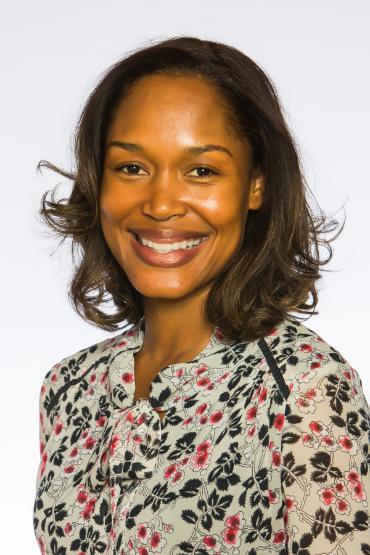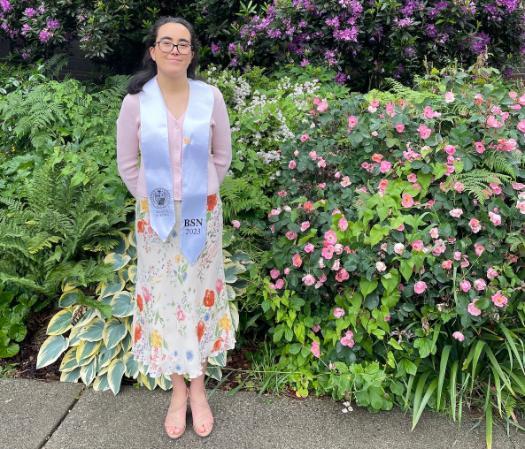2024 – Voices for Change in Black Maternal Health

[ad_1]
After learning about alarmingly high mortality rates of Black women before, during and after pregnancy, two Seattle University undergraduate nursing students decided they needed to do something.
Working with the then CEO of Byrd Barr Place, a nonprofit that serves the Black community in Seattle and across the state, and the Seattle University College of Nursing professor who oversaw the year-long population health internship at the organization, the two students turned their final paper into a high-quality journal article that can serve as an important resource for the nursing community.
Their paper, “Essential Nursing Actions to Reduce Inequalities for Black Women in the Perinatal Period” was published late last year in the prestigious Journal of Obstetric, Gynecologic & Neonatal Nursing.
Bethany Van Baak, ‘22, who works as a registered nurse in the Emergency Department at Overlake Medical Center in Bellevue, says she and Amy Powell, ‘23, wrote the piece of “critical commentary” as a way to move beyond asking “What is the problem?” and doing something about it.
Van Baak says the problem is clear—racism is killing Black women when they are giving birth and the article can help focus the efforts of nurses.
“It can be an actionable, tangible thing that people can actually do to make a difference,” Van Baak says. “The problem is big enough that we need to be doing more than what’s already been done.”
As interns at Byrd Barr Place the students provided the organization with the needed capacity to develop a case for support of this work, says Andrea Caupain Sanderson, former CEO of Byrd Barr Place.
Caupain Sanderson adds that she and others can use the paper to make funding pitches, as well as pitches to other community service organizations to help address this issue. It’s also a personal issue for Caupain Sanderson, who is a Black mother of two children, who is the co-founder and co-executive director at the BIPOC ED Coalition.

Andrea Caupain Sanderson, former CEO of Byrd Barr Place
“The Seattle University interns provided us with the space, time and capacity to get a deeper dimension of the issue and develop the case for support,” she says.
The critical commentary produced by the students arrived not a moment too soon and advocates five points for nurses engaged in the care of Black maternal health:
- Understand drivers of health inequities among Black women.
- Reflect on implicit bias.
- Use respectful care frameworks with Black women.
- Conduct ethical research.
- Advocate for change.
“Our approach to the paper is to not just keep dumping on this issue,” says Van Baak. “But how do we actually make this useful not only to the audience, but specifically to the nursing community?”
In their paper the authors note that “Maternal mortality has increased each year from 2019 to 2022 and Black women are affected disproportionately. Regardless of socioeconomic status or education level, Black women die two to three times more often than white women in the perinatal period.”
Powell, now a registered nurse at the Cedars-Sinai Marina del Rey Hospital in Los Angeles on the medsurg/telemetry unit, says her experience at Seattle University and through the internship gave her an accurate impression of nursing—both the highs and lows—and opened her eyes to health inequalities.

Amy Powell, ’23
“It can be daunting and overwhelming to learn the statistics on this issue,” Powell says. “But this article outlines a good place where nurses can make a difference in their everyday care by advocating for all their patients.”
While the national maternal mortality ratio saw an increase among non-Hispanic white women during the pre-COVID-19 pandemic period and into the shutdown—rising from 17.9 in 2019 to 26.6 in 2021, an almost 49 percent increase—the same period saw a staggering increase for deaths among non-Hispanic Black women.
Already starting out far higher than their white counterparts, Black women saw a nearly 56 percent increase in deaths during the “perinatal” period—starting at 44 deaths per 100,000 of live births in 2019 and rising to 69.9 deaths per 100,000 of live births in 2021.
The authors of the paper note that while the numbers are alarming, nurses know that despair is not an option.
“Although this racial disparity might seem overwhelming on a macro scale, nurses are finding ways to take action,” the authors write.
College of Nursing Assistant Professor of Nursing Jennifer Fricas, PhD, says year-term internships like the population health internship impart mutually beneficial learning and service experiences with community partners. In the past, population health nursing clinical experiences were limited to 10-week intervals. However, she notes relationship building, trust formation and identification of useful engagement activities with community organizations and community members takes much longer.
The final deliverable winding up published in a peer-reviewed nursing journal is atypical, especially for undergraduates.
“When I read it, I immediately recognized that its quality was so high, it could become a peer-reviewed publication, so I reached out to the students to gauge their interest in working on that,” Fricas says.
It’s a long road to publication and she mentored the three other listed authors through the 18-month process, noting that in her 16 years teaching at the SU this is her first experience publishing with undergraduates.
“I was super impressed by how dedicated everyone was to the entire process,” Fricas says. “It was a very fulfilling team achievement!”
[ad_2]
Source link
